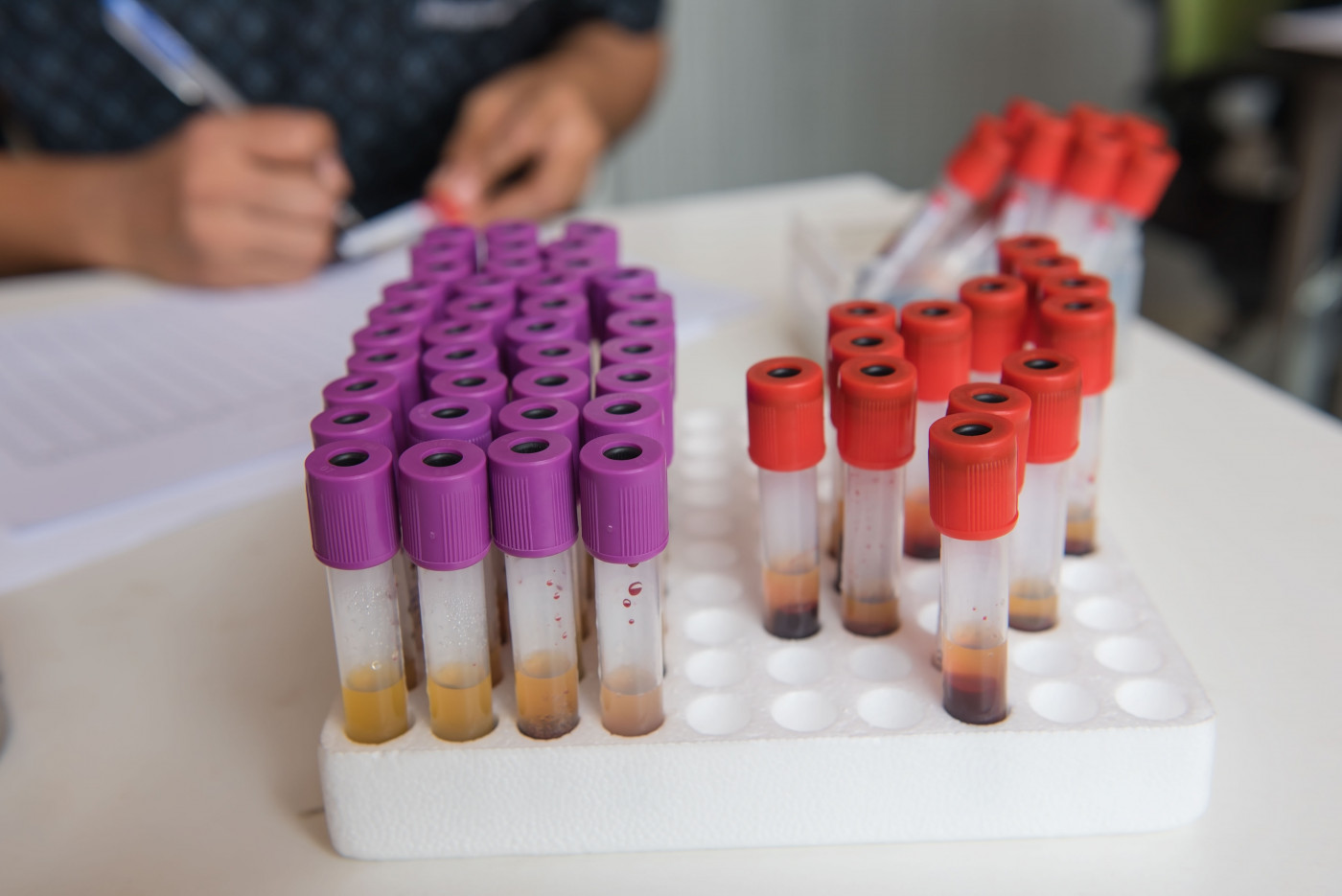Myelin Ceramides Altered in MS, Study Finds

Levels of myelin sheath components called ceramides are altered in the blood of people with multiple sclerosis (MS) and may be linked with retinal degeneration and physical disability, a study has found.
Specific ceramides were altered only in those with progressive MS and may serve as biomarkers of neurodegeneration.
The study, “Serum ceramide levels are altered in multiple sclerosis,” was published in the Multiple Sclerosis Journal.
Ceramides are a family of waxy fat (lipid) molecules found in all cell membranes and are particularly abundant in myelin sheath — the fatty coating on nerve fibers that is damaged by the immune system in MS.
Ceramides also play a role in cell signaling and survival, as well as in regulating inflammatory signaling and immune cell functions.
Studies suggest ceramide metabolism may be impaired in MS, as altered ceramide content has been detected in brain tissue of active MS lesions and normal-appearing white and gray matter in MS patients. As such, ceramides may serve as biomarkers of MS disease progression and prognosis.
To investigate this possibility, researchers based at the Johns Hopkins University School of Medicine in Maryland compared the levels of ceramide circulating in blood serum between MS patients and healthy controls, and investigated associations between serum ceramide levels, disability, and disease processes.
The team measured serum ceramide levels from collected blood samples in 151 relapsing-remitting MS (RRMS) patients (82% female, average age 41.3 years) and 100 patients with primary or secondary progressive MS (63% female, average age 52.1). Also included were samples from 68 healthy controls (71% female, average age 40.7).
There are several members in the ceramide family, each composed of two parts: a sphingosine molecule and a fatty acid.
The sphingosine can be unmodified (Cer) or a modified version called dihydroceramide (DH-Cer), and some have an attached glucose or galactose sugar molecule (hexosylceramides or Hex-Cer) or a lactose sugar (lactosylceramides or Lac-Cer).
The fatty acid portion comprises long chains of carbon atoms with different lengths (between 16 and 26), with some chains saturated and others unsaturated.
The analysis revealed differences in ceramide levels between MS patients and controls, particularly ceramides (unmodified sphingosine) and hexosylceramides.
Ceramide species elevated in MS patients compared to controls included Cer16:0 (ceramide with a 16 carbon atom saturated fatty acid), Cer22:1 (22 carbon atom unsaturated fatty acid), Hex-Cer24:1, Lac-Cer24:1, Lac-Cer22:0, DH-Cer20:0, and DH-Cer24:0.
Reduced ceramide family members found in people with MS included Hex-Cer16:1, Lac-Cer20:1, and DH-Hex-Cer26:0.
Some lipid species were significantly altered only in patients with progressive MS such as Cer20:0, Cer20:1, Cer26:1, Hex-Cer20:1, Hex-Cer22:1, Hex-Cer16:0, Hex-Cer18:0, Hex-Cer20:0, Hex-Cer22:0, Hex-Cer26:0, Lac-Cer16:1, Lac-Cer16:0, and DH-Hex-Cer22:0.
No significant differences were identified in 24 people with primary progressive MS compared to 76 participants with secondary progressive MS.
Higher levels of ceramide species DH-Cer20:0 and Lac-Cer24:1 were linked with a worse disability as measured by the expanded disability status scale (EDSS), and higher levels of Lac-Cer20:1 were found to be independently associated with a worse global age-related MS severity score (ARMSS).
In an analysis of 70 MS patients who exhibited significant EDSS worsening, elevated levels of Cer16:0 at the beginning of the study (baseline) were associated with higher odds of EDSS worsening at five years. No associations were found between other ceramide species and the odds of EDSS worsening.
Researchers also conducted retinal eye scans to measure retinal atrophy (thinning), which has been shown to reflect global MS processes. Higher levels of HexCer24:1, Hex-Cer22:0, and DH-Hex-Cer22:0 were associated with overall retinal atrophy.
Elevated Cer20:0, Cer20:1, Cer22:1, Hex-Cer22:1, Hex-Cer16:0, Hex-Cer26:0, and Lac-Cer22:0 all were associated with the thinning of the retinal nerve fiber layer but not with the adjacent ganglion inner plexiform layer.
Finally, higher levels of Hex-Cer22:0 were correlated with higher concentrations of serum neurofilament light chain (sNfL), proposed as a biomarker of nerve fiber injury in MS.
Overall, the data demonstrated that “ceramide levels are altered in patients with MS,” the team wrote. “Importantly, certain [ceramides] were altered primarily in [progressive MS], independent of age, and these may be of special interest since they could potentially serve as biomarkers of neurodegeneration.”
The team also found that “specific ceramides may be associated with retinal neurodegeneration or physical disability; however, we were not able to identify a single ceramide that could serve as a global clinically relevant biomarker,” they wrote.
Nevertheless, the team believes that “ceramides are clearly of interest in MS.”






